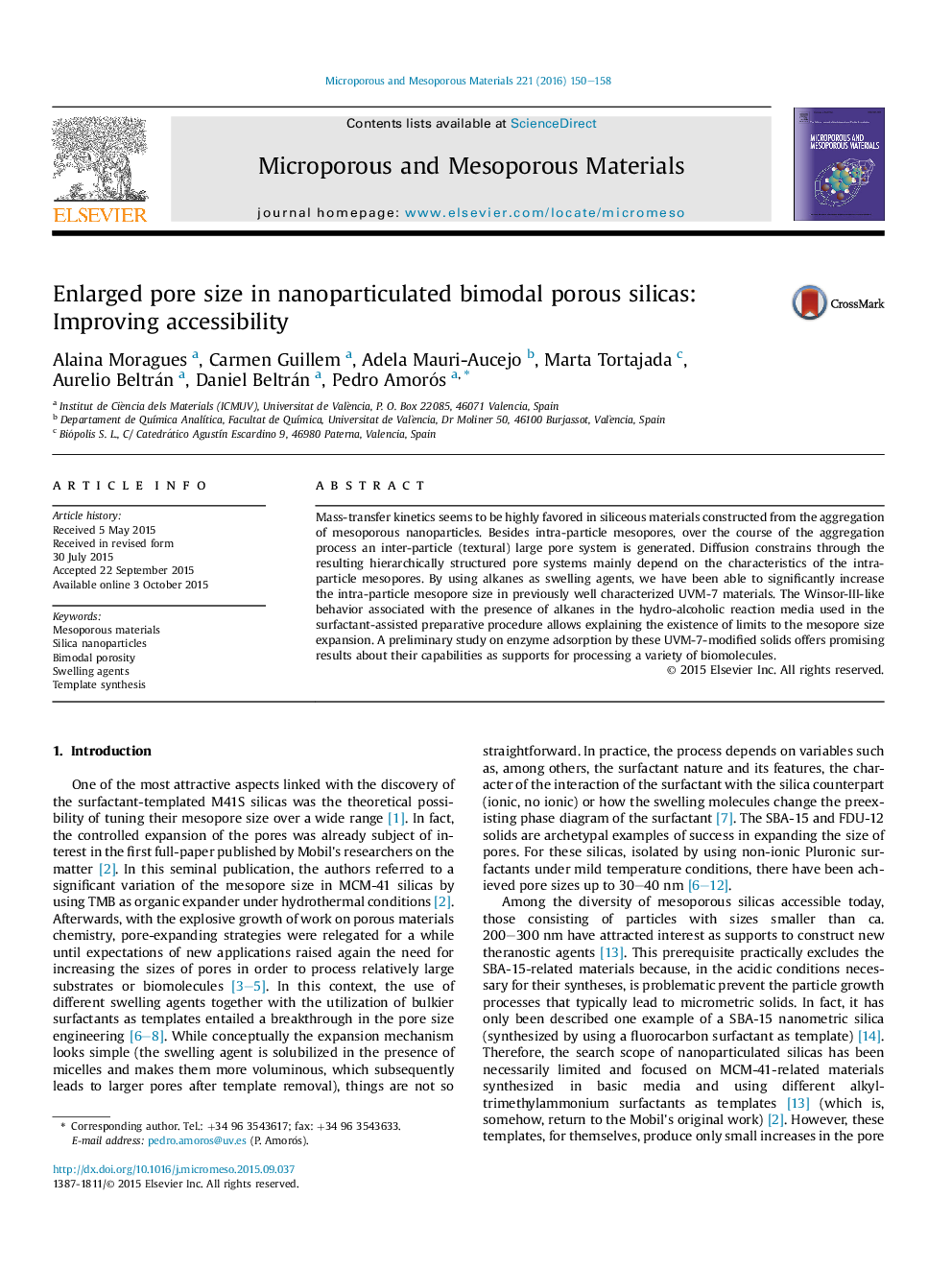| Article ID | Journal | Published Year | Pages | File Type |
|---|---|---|---|---|
| 72324 | Microporous and Mesoporous Materials | 2016 | 9 Pages |
•The intra-particle mesopores in nanoparticulated bimodal porous silicas have been enlarged up to ca. 56%.•We have established the limits for the mesopore expansion on the basis of classical principles of colloid chemistry.•The resulting open architecture leads to an enhanced accessibility for guest species.
Mass-transfer kinetics seems to be highly favored in siliceous materials constructed from the aggregation of mesoporous nanoparticles. Besides intra-particle mesopores, over the course of the aggregation process an inter-particle (textural) large pore system is generated. Diffusion constrains through the resulting hierarchically structured pore systems mainly depend on the characteristics of the intra-particle mesopores. By using alkanes as swelling agents, we have been able to significantly increase the intra-particle mesopore size in previously well characterized UVM-7 materials. The Winsor-III-like behavior associated with the presence of alkanes in the hydro-alcoholic reaction media used in the surfactant-assisted preparative procedure allows explaining the existence of limits to the mesopore size expansion. A preliminary study on enzyme adsorption by these UVM-7-modified solids offers promising results about their capabilities as supports for processing a variety of biomolecules.
Graphical abstractFigure optionsDownload full-size imageDownload as PowerPoint slide
